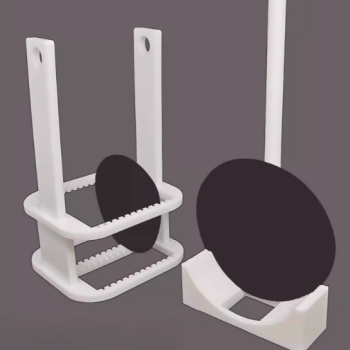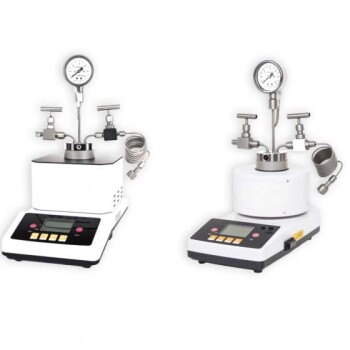Our thermal evaporation sources are essential tools in the field of thin film deposition, used for depositing various metals, alloys, and materials onto substrates. Products include Molybdenum/Tungsten/Tantalum Evaporation Boats, Electron Beam Evaporation Crucibles, and Graphite Evaporation Crucibles, among others. These sources ensure compatibility with different power sources and are crucial for achieving uniform and high-quality thin film coatings.
Toggle Categories
Get Instant Support
Choose your preferred way to connect with our team
-
Get Free Quote Fill out form for detailed pricing
-
Send Email Detailed inquiry support
-
WhatsApp Quick mobile chat
Response Time
Within 8 hours on working days, 24 hours on holidays
thermal evaporation sources

High Purity Pure Graphite Crucible for Evaporation
Item Number : KME07

E Beam Crucibles Electron Gun Beam Crucible for Evaporation
Item Number : KES01

Electron Beam Evaporation Coating Conductive Boron Nitride Crucible BN Crucible
Item Number : KES03

Tungsten Evaporation Boat for Thin Film Deposition
Item Number : LMF-TEB

Molybdenum Tungsten Tantalum Evaporation Boat for High Temperature Applications
Item Number : KME01

Hemispherical Bottom Tungsten Molybdenum Evaporation Boat
Item Number : KME-YD

Ceramic Evaporation Boat Set Alumina Crucible for Laboratory Use
Item Number : KME09

High Purity Pure Graphite Crucible for Electron Beam Evaporation
Item Number : KMS02

Molybdenum Tungsten Tantalum Special Shape Evaporation Boat
Item Number : KME01-2

Customizable PTFE Wafer Carriers for Semiconductor and Lab Applications
Item Number : PTFE-39
Advanced Thermal Evaporation Sources for Precision Thin Film Deposition
Thermal evaporation sources are pivotal in the process of thin film deposition, a technique widely used in industries such as semiconductor manufacturing, optics, and electronics. Our range of thermal evaporation sources, including Molybdenum/Tungsten/Tantalum Evaporation Boats, Electron Beam Evaporation Crucibles, and Graphite Evaporation Crucibles, are designed to meet the stringent requirements of these applications.
Key Features and Principles
During operation, electrical current passes through supply rods into the source, which allows for resistive heating to high temperatures. This heating process melts and evaporates the supported evaporant, releasing vapor that moves through the chamber vacuum to coat a substrate. The source selection is crucial, as it determines the efficiency and purity of the deposition process. Our sources are equipped with box-type shielding to improve efficiency and restrict the emission of IR and deposition material in unwanted directions.
Advantages of Our Thermal Evaporation Sources
- High Deposition Rates: Our sources ensure rapid and efficient deposition, crucial for high-throughput applications.
- Excellent Uniformity: The use of masks and planetary systems ensures uniform coating across the substrate.
- Low Impurity Levels: Electron-beam evaporation methods offer low impurity levels, ensuring high-purity coatings.
- Versatility: Suitable for a wide range of materials, including metals, alloys, and non-metals.
- Customizable Solutions: We offer customizable evaporation sources to meet specific customer requirements, ensuring optimal performance for unique applications.
Applications
Our thermal evaporation sources are used in various applications, including:
- Semiconductor Manufacturing: For depositing thin films in integrated circuits.
- Optics: In the production of optical coatings for lenses and mirrors.
- Electronics: For creating conductive and insulating layers in electronic devices.
- Research and Development: In laboratories for advanced materials research and development.
Why Choose Us?
Our expertise in thermal evaporation sources is backed by years of experience and a commitment to quality. We provide not only high-performance products but also comprehensive technical support and customization services. Whether you need standard evaporation sources or tailored solutions, we are here to meet your needs.
For more information or to discuss your specific requirements, please contact us. Our team of experts is ready to assist you in achieving the best results for your thin film deposition processes.
FAQ
What Are Thermal Evaporation Sources?
What Are The Main Types Of Thermal Evaporation Sources?
How Do Thermal Evaporation Sources Work?
What Are The Advantages Of Using Thermal Evaporation Sources?
What Applications Are Thermal Evaporation Sources Used For?
REQUEST A QUOTE
Our professional team will reply to you within one business day. Please feel free to contact us!
Related Articles

The Invisible Geography of Heat: Why "Max Temperature" is a Trap
In thermal processing, maximum temperature is often a vanity metric. Discover why the "Uniform Heated Zone" is the true architect of repeatability.

How to Select the Right Oil-Free Diaphragm Pump for Your Lab or Industrial Needs
Learn how to choose the right oil-free diaphragm pump for your lab or industry—balancing specs, chemical resistance, and lifetime costs.

How to Choose Crucible Materials That Prevent Chemical Degradation in Vacuum Induction Melting
Learn how to choose crucible materials for vacuum induction melting to prevent chemical degradation and optimize alloy purity. Essential guide for industrial applications.

Fused Silica Crucible: Properties, Applications, and Preparation Process
An in-depth look at the properties, applications, and preparation methods of fused silica crucibles in the solar photovoltaic industry.

Graphite Crucible in the Future Production of Third Generation Semiconductor Compounds
Explores the role and future trends of graphite crucibles in the production of third-generation semiconductor materials.

High Purity Graphite Crucible: Features, Production, and Usage
An in-depth look at high purity graphite crucibles, their production processes, and their industrial applications.

Inorganic Non-Metallic Materials: Crucibles
An overview of crucibles made from various inorganic non-metallic materials, their uses, technical parameters, and advantages.

Preventing Sample Bonding in Aluminum Oxide Crucible Sintering
Strategies to prevent sample bonding during sintering in aluminum oxide crucibles.

Preparation and Performance of Alumina Crucibles for Vacuum Induction Melting Furnace
This article discusses the preparation process and performance benefits of alumina crucibles for vacuum induction melting furnaces, emphasizing thermal stability and long service life.

Ceramic Alumina Crucible for Thermal Analysis Test Containers
An in-depth guide on selecting and using ceramic alumina crucibles for thermal analysis tests, focusing on factors affecting test results.

Alumina Crucibles in Precision Casting
Explores the use of alumina crucibles in precision casting, focusing on their properties and advantages in high-temperature alloy melting.

Comprehensive Guide to Alumina Crucibles in Powder Metallurgy
An in-depth look at the properties, applications, and usage of alumina crucibles in powder metallurgy processes.

Crucible Types, Properties, and Applications
A detailed overview of various crucible types, their properties, and application areas in laboratory and industrial settings.

Introduction to Various Ceramic Crucibles
An overview of different types of ceramic crucibles, their properties, and applications.

The Role and Types of Crucibles in Scientific Experiments
Explores the significance and various types of crucibles in scientific experiments, focusing on their materials and applications.

Comparison of Pyrolytic Graphite and Pyrolytic Boron Nitride Crucibles
A detailed comparison of pyrolytic graphite and pyrolytic boron nitride crucibles, focusing on their preparation processes, characteristics, and applications.

Guidelines for the Use of Boron Nitride Crucibles
Instructions on the proper use, precautions, and compatibility of boron nitride crucibles.

Electron Beam Evaporation Coating Technology and Material Selection
An in-depth look at the principles and applications of electron beam evaporation coating technology, including material selection and various fields of application.

Electron Beam Evaporation: Advanced Thin Film Creation
Explores the technology and applications of electron beam evaporation in thin film production.

Electron Beam Evaporation Coating: Principles, Characteristics, and Applications
An in-depth analysis of electron beam evaporation coating technology, its advantages, disadvantages, and applications in thin film manufacturing.



